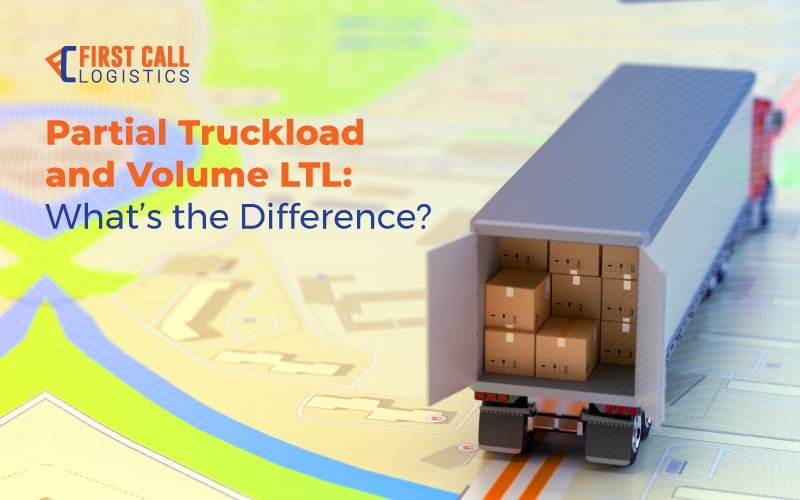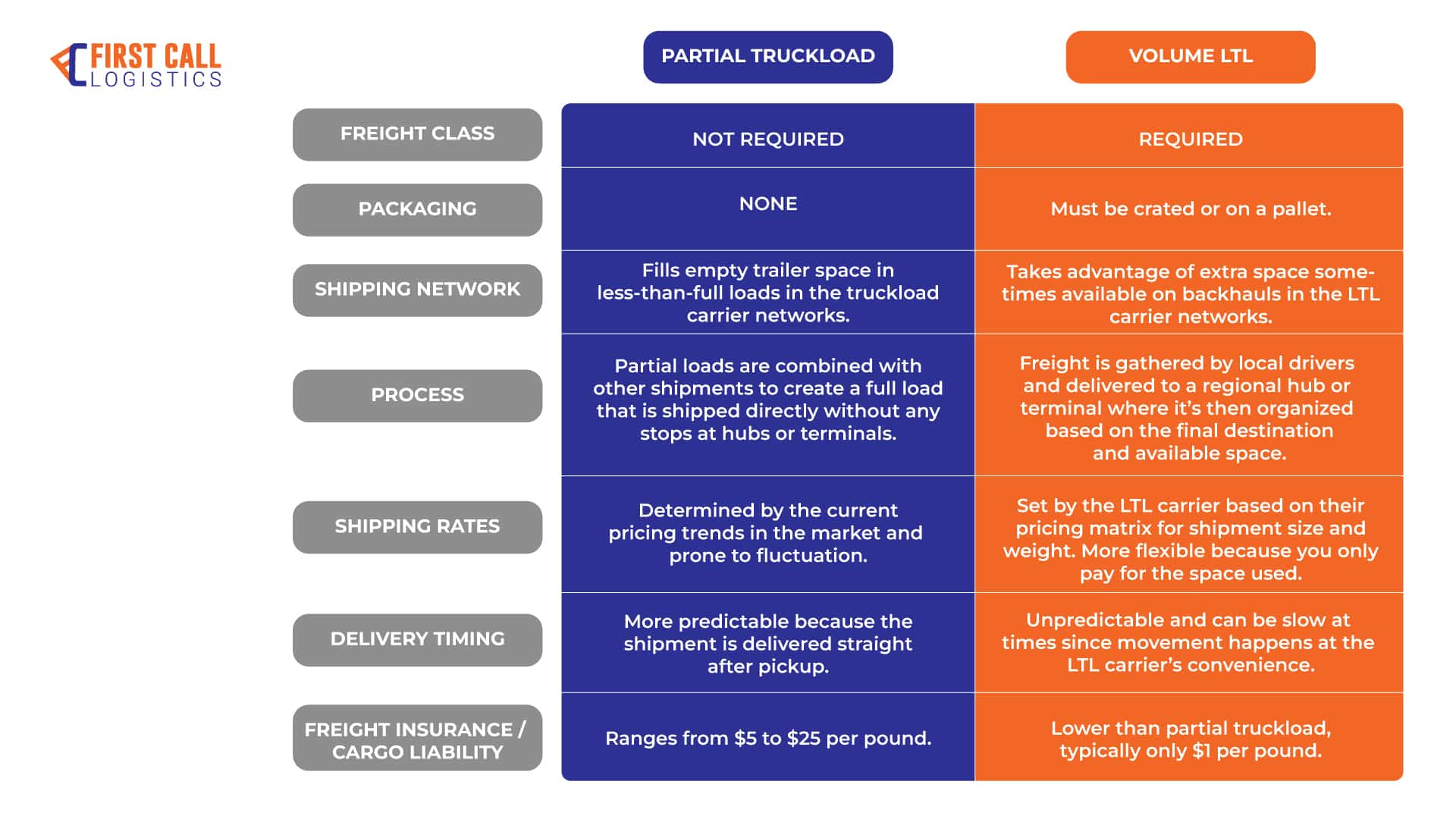Understanding Partial Truckload and Volume LTL Shipping

What is Partial Truckload and Volume LTL?
Partial truckload, also sometimes referred to as a “shared” truckload, is a shipping mode for freight weighing between 8,000-27,500 lbs and packaged on eight or more pallets but is not large enough to require the use of a full transport trailer. Partial truckload shipping saves on shipping costs by offering up extra trailer space at a discounted rate to create a full load.
Volume LTL is another option for moving freight that exceeds the contractual limitations of LTL shipping. Volume LTL is typically smaller than partial load shipping, weighing at least 5,000 lbs over six or more pallets. Volume LTL typically relies on local drivers to gather cargo and bring it to a central location for sorting. The shipments are then organized and consolidated based on their final destination. Volume LTL shipping takes advantage of the extra space available on backhauls within LTL carrier networks.
What’s the Difference Between Partial Truckload and Volume LTL?
Though these terms are sometimes used interchangeably as they both take advantage of underutilized trailer space, there are some key differences between the two.
Here’s a quick guide to some of the most important distinctions:
Can you replace Standard LTL freight with Volume LTL?
As a cost-saving option that accelerates a brand’s ability to get products out on the road, standard LTL shipping remains the default for moving five pallets or less at a time. Volume LTL doesn’t replace standard LTL freight — it simply provides an alternative for loads outside of the normal standard LTL requirements.
What Are the Benefits of Volume LTL and Partial Truckload?
No business likes paying to move empty trailer space. With volume LTL and partial truckload shipping, everyone wins: carriers reduce their number of empty miles driven, while businesses enjoy discounted shipping rates.
Since this type of freight is essentially piggybacking on other regularly scheduled shipments, it typically stays on one trailer throughout its entire journey. Fewer instances of loading/unloading cargo at new locations lower the risk of damaging products in transit, and seeing as replacing damaged products often come at a surprisingly steep cost, this increased measure of safety makes both volume LTL and partial truckload shipping appealing alternatives.
Which Is Better: Volume LTL or Partial Truckload?
As with nearly every good logistics question, it depends.
For brands needing to hit a guaranteed delivery window, partial truckload is preferred since volume LTL shipping comes with more unpredictable delivery times. Conversely, a business with flexible delivery windows can take advantage of the friendlier cost-savings of volume LTL.
Interested in learning which suits your business best? 3PL providers like First Call can help broker volume LTL and partial truckload shipping deals for you. Contact us today and learn if this shipping method is right for you!
Simplify your Next Shipment with First Call Logistics
Building and managing cost-efficient supply chains is a full-time job. First Call’s rare combination of in-house assets, expert problem-solving and track record of stellar customer service makes us the 3PL of choice for business partners with a wide range of shipping needs.
